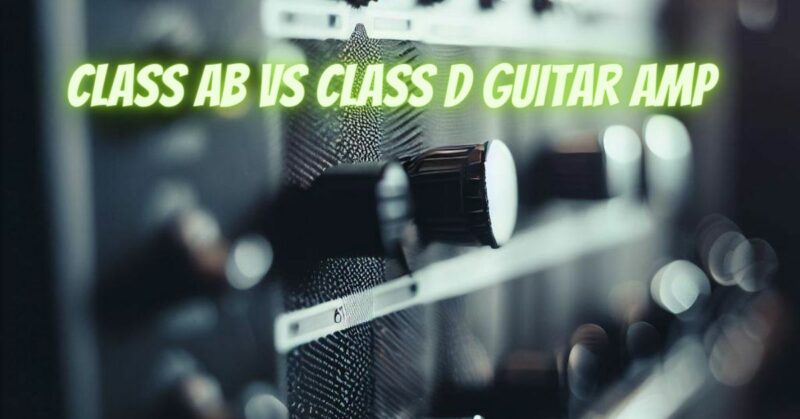Guitar amplifiers play a pivotal role in shaping the tone and character of a guitarist’s sound. Among the various amplifier classes, Class AB and Class D stand out as popular choices for musicians due to their distinct characteristics and advantages. In this article, we will delve into the nuances of Class AB and Class D guitar amplifiers, highlighting their features, differences, and the scenarios where each excels.
Understanding Class AB Amplifiers:
Class AB amplifiers are a well-established choice in the world of audio amplification. They are known for their balance between efficiency and sound quality. These amplifiers combine elements from both Class A and Class B amplifier designs, aiming to reduce the drawbacks associated with each.
In a Class AB amplifier, two transistors work in tandem: one handles the positive half of the audio signal, and the other manages the negative half. This allows for reduced crossover distortion compared to pure Class B amplifiers, resulting in smoother audio transitions and improved sound quality. Class AB amplifiers are widely used in both professional and consumer audio applications due to their ability to deliver relatively high-quality sound while still being reasonably efficient.
Exploring Class D Amplifiers:
Class D amplifiers, on the other hand, have gained prominence for their remarkable efficiency and compact size. These amplifiers employ a switching approach, where the audio signal is turned into a series of pulses that control the output transistors. As a result, Class D amplifiers waste less power as heat, making them highly efficient and suitable for applications where power consumption is a concern.
Despite their efficiency, there have been concerns about the sound quality of Class D amplifiers, particularly in the early days of their development. However, advancements in technology have significantly improved their performance. Modern Class D amplifiers utilize sophisticated circuitry and feedback mechanisms to minimize distortion and achieve high-fidelity audio reproduction.
Comparing Characteristics:
- Efficiency: Class D amplifiers outshine Class AB amplifiers in terms of efficiency. Class D amplifiers can achieve efficiency levels above 90%, making them ideal for portable setups and situations where power conservation is important.
- Sound Quality: While Class AB amplifiers are traditionally associated with superior sound quality due to their linear operation, Class D amplifiers have made remarkable strides in this area. Many high-quality Class D amplifiers can now rival the sound quality of their Class AB counterparts.
- Size and Weight: Class D amplifiers are generally more compact and lightweight compared to Class AB amplifiers. This makes them a preferred choice for musicians who value portability.
- Heat Dissipation: Class D amplifiers generate less heat due to their switching nature, reducing the need for extensive cooling systems.
Choosing the Right Amplifier:
The choice between a Class AB and Class D amplifier ultimately depends on your specific requirements and preferences. If you prioritize sound quality and are willing to sacrifice a bit of efficiency and portability, a Class AB amplifier might be the right choice. On the other hand, if you need a compact and energy-efficient solution without compromising too much on sound quality, a Class D amplifier could be the perfect fit.
In conclusion, both Class AB and Class D amplifiers have their strengths and weaknesses. The advancements in technology have blurred the lines between their performance levels, making it important to audition various models before making a decision. Whether you’re a professional guitarist or an amateur musician, understanding the differences between these amplifier classes will empower you to make an informed choice that suits your musical aspirations.


